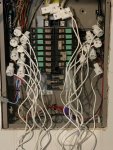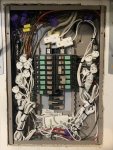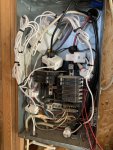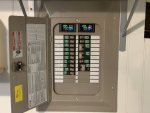- 2,109
- 554
- 113
- Location
- Davis County, UT
USA homes run 120/240v split, single phase (I believe that's the correct terminology). I have read multiple posts of very good information from @Isaac-1 about the MEP-701A/016B generator (the first military generators I've owned):
Examples:
https://www.steelsoldiers.com/threads/tm-and-wiring-question-for-mep701a-16b.129612/#post-1605067
https://www.steelsoldiers.com/threads/mep-016b-mep-701a-a-c-hookup-confusion.56556/#post-656941
In the case of my MEP-701/016B 3kw generator(s), that gives me 32A in 120v mode, or two 16A 'legs' (L1 & L2) in 240v mode.
In the case of my new-to-me MEP-803A 10kw generator, that gives me 104A in 120v mode, or two 52A 'legs' (L1 & L2) in 240v mode
My question are:
Examples:
https://www.steelsoldiers.com/threads/tm-and-wiring-question-for-mep701a-16b.129612/#post-1605067
https://www.steelsoldiers.com/threads/mep-016b-mep-701a-a-c-hookup-confusion.56556/#post-656941
In the case of my MEP-701/016B 3kw generator(s), that gives me 32A in 120v mode, or two 16A 'legs' (L1 & L2) in 240v mode.
In the case of my new-to-me MEP-803A 10kw generator, that gives me 104A in 120v mode, or two 52A 'legs' (L1 & L2) in 240v mode
My question are:
- I assume all MEP generators are like this for 240v mode...(?) (meaning they are a true 240v, not 120/240V split single phase)
- How close do you have to "balance" the load?
- For example:
- In 240v mode on my 3kw, can I pull 5A on L1 and 15A on L2 and not hurt the 3kw generator?
- In 240v mode on my 10kw, can I pull a total of 5A on L1 and 40A on L2 and not hurt the 10kw generator?
- Or do you need to pull, as close as possible, the same amperage on each leg?
- I definitely understand to not exceed the amperage available on each leg. That is clear as day.
- For example:
Last edited:



















